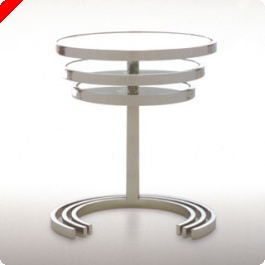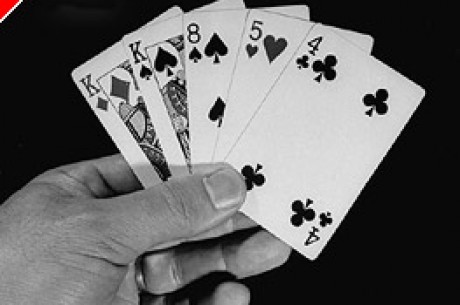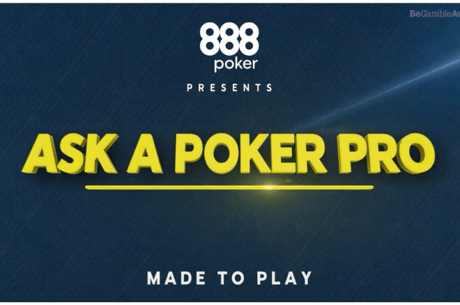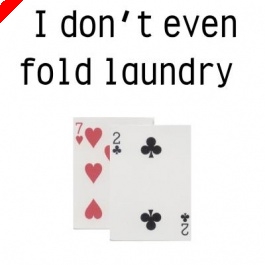6-Max Limit Hold'em: Preflop Strategy
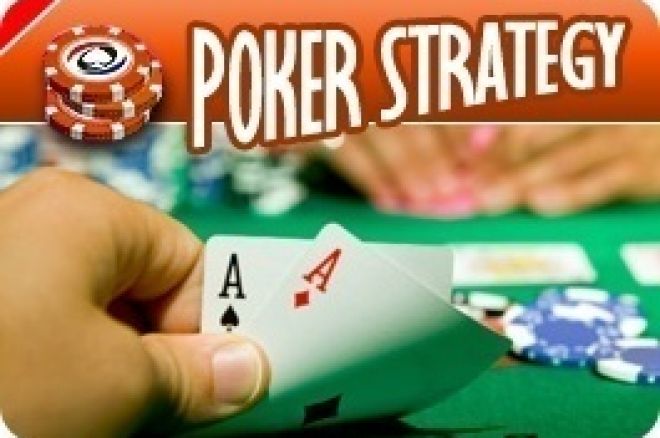
Limit Hold'em (LHE) is often seen as the ugly duckling next to No Limit Hold'em. Limit Hold'em might not bring the kick of No Limit, where you can lose your entire stack or double up in one hand. On the other hand, in Limit Hold'em you can keep betting and raising throughout the entire hand, in a sense making it more of an action game. The action is just not as intense as in No Limit. In LHE there is also more emphasis on playing after the flop. You need to make decisions on every street, and with every decision you need to think about the strength of your hand, your opponent's hand, etc. Besides that you need to take the action that is most profitable for you. Even if LHE is not your game of choice, you will learn a lot by playing it every now and then.
The most important concept in LHE is aggression. You always have to be aggressive if you think you have the best hand. When you have a good hand, you keep betting and raising until you believe your opponent has a better hand. Many opponents will call with any pair on the river, so it is important to keep valuebetting. As far as slowplaying goes in LHE, just don't do it. Not before the flop and not after the flop. You are likely to lose more value slowplaying than you gain by deception. Especially when up against two or more opponents you always need to bet/raise when you think you have the best hand.
You also need to be aggressive with your draws. There are two important reasons for this. First of all, by playing your draws aggressively you have two ways to win the pot. You can now win by hitting your draw or by making every body else fold. The second reason to semi-bluff is for balance. Imagine playing against an opponent who never bluffs. If he now bets, you can easily fold your marginal hands. But if you know this player also bluffs, you are forced to keep calling with a wide range of hands. So in order to get paid off properly when you do have a hand you also need to (semi-)bluff every now and then. On limits of $5/$10 and lower, however, bluffing for balance is not really necessary.
When semi-bluffing, it is seldom a good idea to do this against more than one opponent. Imagine being up against one opponent and you decide to semi-bluff. If this player will fold his hand 1 in 3 times, this means you will pick up the pot by bluffing 33% of the time. Now lets say you're up against two opponents who both fold 1 in 3 times. The chance that you will now pick up the pot by bluffing is 1/3 x 1/3 = 1/9, which is about 11%. As you can see a semi-bluff in a multiway pot is rarely going to be successful, so I recommend you only use it in heads-up situations.
In this article we will focus on the basic preflop strategy for 6-max Limit Hold'em. In later articles we will move on to playing after the flop. This article will concentrate on a couple of common preflop situations; what to do when everyone in front of you folds, hot to play against a raise and how to play on the button. I will also discuss relative position and defending your blinds.
At a 6-max table, you have four positions when not including the blinds. The player who is first to act is UTG (Under The Gun), followed by MP (Middle Position), followed by CO ( Cut Off) and finally the BTN(Button). The SB and the BB are the Small blind and the Big Blind. In LHE you can only bet/raise a predetermined amount. Before the flop and on the flop this is the so-called small bet. The small bet is always the same amount as the big blind. On the turn and river we then get the big bet, which is always twice the amount of the small bet. A $5/$10 table would therefore have a small bet of $5 and a big bet of $10. On most poker sites there is always a limit to the number of bets/raises that players can make on one street. This cap is usually always 4 bets.
If everyone in front of you folded
If every player in front of you has folded their hand (or you are sitting UTG) it is always important to open with a raise. Don't be scared that the others might fold, you will usually get enough action. And even if everybody else does fold, you still pick up 0.75 big bets without any risk. On average, only hands like AA-QQ and AK will make you more than 0.75 big bets. Below you see a list of hands you can raise with when it has been folded around to you. Remember that these are only guidelines, and that you can always deviate from this line if you have a good reason for it.
UTG: 55+, A5s+, K9s+, Q9s+, J9s+, T9s, 98s, 87s, A8o+, KTo+, QJo
MP: 44+, A4s+, K7s+, Q8s+, J8s+, T8s+, 98s, 87s, 76s, A6o+, K9o+, QTo+, JTo
CO: 33+, A2s+, K4s+, Q5s+, J7s+, T7s+, 97s+, 86s+, 75s+, 65s, A4o+, K6o+, Q8o+, J9o+, T9o
BTN: 22+, A2s+, K2s+, Q3s+, J4s+, T5s+, 95s+, 85s+, 74s+, 64s+, 54s, A2o+, K2o+, Q6o+, J7o+, T7o+, 97o+, 86o+
If your opponents are very loose on the flop and you often see the flop with 3-4 players, you will have to play a little tighter and fold more hands. Hands like A6o don't play as well against numerous opponents. You also wouldn't want to invest 2 bets to play 76s against four opponents, even though this hand plays relatively well in multiway pots. The best thing to do when sitting at a table with a lot of loose players would be to just fold this hand.
If there are only five players sitting at the table (including yourself), then there effectively is no UTG position. If you now are first to act, you are practically in MP.
If there is a raise
If a player raises and everybody else in front of you folds, you have two options. You either fold because you think your hand is not good enough, or you 3-bet your opponent in order to isolate him. Calling is by far the worst option here. First of all you should always re-raise if you think you have the better hand, and furthermore, you don't want to give the BB the right odds to call with hands like J10o, 76s or 53s. If both the blinds fold, they leave 0.75 big bets in the pot as dead money. This means that you will have to win the pot less than 50% of the time to still make profit. One example: You are on the button and the CO raises. You 3-bet, everybody else folds (including the blinds) and CO calls. There are now 7.5 small bets in the pot although you only invested 3. If you now win the hand 40% of the time, you will still make a profit of 7.5 x 0.4 = 3. In other words, you still make profit even if your hand is slightly worse than that of the CO.
The hands you can 3-bet with depend on the range of the raising player. The dead money in the pot makes sure that you can re-raise with a slightly worse hand. Then again, the original raiser could also decide to re-raise you again, resulting in a bigger loss for you if your opponent does happen to have a monster. As a rule of thumb, you can re-raise about 50% of the hands of the original raiser. If he, for example, raises with the top 30% of his hands, you can re-raise with the top 15%. In order to decide which hands you can re-raise with, you need to know the range of your opponent. If you want to 4-bet you will have to think about which hands your opponent would re-raise with, and then only 4-bet with the hands that are ahead against this range.
Many opponents will easily give up on the flop if you re-raise them preflop. They will often try and see if they hit the flop, and if not, they will get rid of their hand. Here is some more maths for you. Lets go back to the situation we described earlier where the CO raises and you re-raise on the button. There are now 7.5 small bets in the pot. If you continuation bet on the flop, you are now risking one bet to win 7.5 bets. If the CO folds only 12% of the time here you will still make a profit. Therefore, if you know your opponents will easily give up their hands on the flop, you could choose to re-raise more often before the flop.
On the button with a couple of callers
It doesn't happen too often at shorthanded tables, but sometimes you will be sitting on the button with a couple of players calling in front of you. In this case you can choose to see a cheap flop and play the rest of the hand in position. Since you know it will end up being a mutliway pot, you shouldn't think about raising with hands that don't play well against numerous opponents. A hand like A9o is very playable here, you just shouldn't raise with it, while a hand like QJs can easily be raised here. Hands you can limp with here are for example 66, A8o, K9o, 76s, 33. Make sure not to expand your range too much though. Hands like J6o, 42o and 35s are still unplayable in this situation.
Relative position
Position is, as always in poker, very important in LHE, as you will have to make a lot of decisions after the flop. The positions for postflop play are decided before the flop. If you have position, it will be easier for you to make decisions, because you can look at what your opponents do before you have to act yourself. Everyone is aware about absolute position. This is the position you have with regards to the dealer button. Besides absolute position, there is also something called relative position. This is your position with regards to the player who has the initiative in the hand (the preflop raiser). If this player is directly to your right in a multiway pot, then your relative position is very bad. If everyone checks to the preflop raiser on the flop, he is likely to bet and then you will have to decide what to do. You now have to decide whether or not to put money into the pot without knowing what the other players behind you are going to do. If, however, the preflop raiser is directly to your left, then you can check to him on the flop, after which he will bet and all other players have to act before you have to make a decision. To better illustrate this concept I have worked out two examples. First we have a situation where you expect to have the perfect relative position:
Situation 1: (6 players) Hero is BB with J♠5♠
2 folds, CO raises, Button calls, SB folds, Hero calls.
This is an easy call with J5s. You can now check on the flop, the CO bets and you can wait for the CO and BTN to act before making a decision. The fact that you are in perfect relative position here provides you with information without you having to pay anything for it. If the BTN now calls, you can also call and be sure that no other player is going to raise. You now know for sure that you can see the turn for one single bet. If the BTN folds, you can also choose to bluff the CO if you think he missed the flop. And if you have a very strong hand you can check-raise both players after the BTN called. Now both players will have to pay 2 bets to see a flop. Compare this to the following situation:
Situation 2: (6 players) Hero is BB with J♠5♠
2 folds, CO calls, Button raises, SB folds, Hero folds, CO calls.
If you now check on the flop, the CO will also check, after which the BTN will make a continuation bet. Now you will have to decide what to do while you don't know what the CO is going to do behind you. You can't just call to see a cheap turn because CO could still raise after you acted. You also can't bluff here because you would need to bluff two players out of the pot, which doesn't work very often. And if you have a monster hand there is now a big chance that the CO will fold after you raise (we don't slowplay), while it is likely that he would have called if he would only have to call a single bet every time. All in all this situation is a lot worse for you when compared to the first situation. In this second example it would have been better to fold J5s.
Although the concept of relative position only kicks in on the flop, you will have to consider it when making your preflop decision. In situation 1 you can be a lot looser with your call because you are in a better position after the flop. In situation 2 it will be more difficult to play after the flop, which is why you should play tighter in situation 2.
Furthermore, you should be a lot more inclined to 3-bet in situation 2 in order to isolate the preflop raiser. If you would be holding 99 for example, you could still just call in situation 1, but in situation 2 you would improve your situation by 3-betting to try and get heads-up. In situation 1 your chance of coming heads-up is minimal.
Defending your blinds
Stealing and defending your blinds plays an important part at shorthanded tables, as you will be in the blinds 33% of the time at a 6-max table.
In the Small Blind
If you are in the small blind and a player raises and everyone else folds, you will always either have to fold or 3-bet. If you call here you give the big blind 1:5 odds to call as well, which he is likely to do with a great deal of his hands (as he also has perfect relative position). If you 3-bet, he will have to call 2 bets, and as a result he is likely to fold unless he has a good hand. If he does fold, he leaves dead money in the pot, which again means that you will have to win the pot less than 50% to make this play profitable.
You can again use the rule of thumb here to only 3-bet with hands that are ahead against your opponent's raise-range. If the BTN raises, for example, and you think he will do this with the top 40% of his hands, then you can re-raise him with the top 20% of your hands. If, however, UTG raises (with top 20% of his hands), then you can only 3-bet with the best 10% of your hands.
In the Big Blind
When sitting in the big blind and facing a raise, then you won't have to re-raise as you are already sitting heads-up anyways. You now get 1:3.5 odds to call. Because you are getting good odds you can call with quite a few hands here. As a guideline you can choose to call with the top 60% of your hands. According to PokerStove, this is the following range:
22+, A2s+, K2s+, Q2s+, J2s+, T2s+, 95s+, 85s+, 74s+, 64s+, 54s, A2o+, K2o+, Q4o+, J7o+, T7o+, 97o+, 86o+, 75o+, 65o
Bear in mind, however, that you will always have to consider where this raise is coming from. If the raise comes from a player UTG, for example, it is more likely that this player will have a strong hand, which means you should start playing a little tighter and fold more hands.
As an alternative you could also choose to never 3-bet in the big blind (if you know you will see the flop heads-up). Now you can check-raise pretty much any flop and get the same value out of the hand. The only difference is that now you are not giving away any information about the strength of your hand. If the flop shows K-7-6, for example, and you check-raise, you could be holding 8-9 as well as A-A. This makes it very hard for your opponent to put you on hands, which will eventually lead to more mistakes from your opponent.
I would like to point out that this strategy is not meant for everyone. You can't just fold every flop that you miss after your opponent makes his inevitable continuation bet. Furthermore, you also lose value preflop by not raising a hand like A-A. You will have to find a way to make up for this lost value after the flop.
